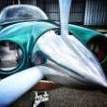This guy is an embarrassment to Mooney pilots.
-
Members Online
- Deb
- jcolgan
- Todd1
- IvanP
- C.J.
- NickG
- DEGWS
- hazek
- LANCECASPER
- prillayo03
- mlafayette
- Van Lanier
- Brian2034
- Captnmack
- 201er
- ajudson
- AH-1 Cobra Pilot
- varlajo
- Ryan ORL
- thomas1142
- dzeleski
- Greg Ellis
- Crawfish
- CalebH
- johnnyr172
- Bunti
- Rwsavory
- 1980Mooney
- takair
- TCC
- Fly Boomer
- Ivan
- DXB
- JOHN49
- PeterRus
- YeloSub
- peterl
- Hank
- SKI
- gevertex
- wombat
- SoKYMooney
- mooneydemi
- mooney_flyer
- 00-Negative
- Zulee


Recommended Posts
Join the conversation
You can post now and register later. If you have an account, sign in now to post with your account.